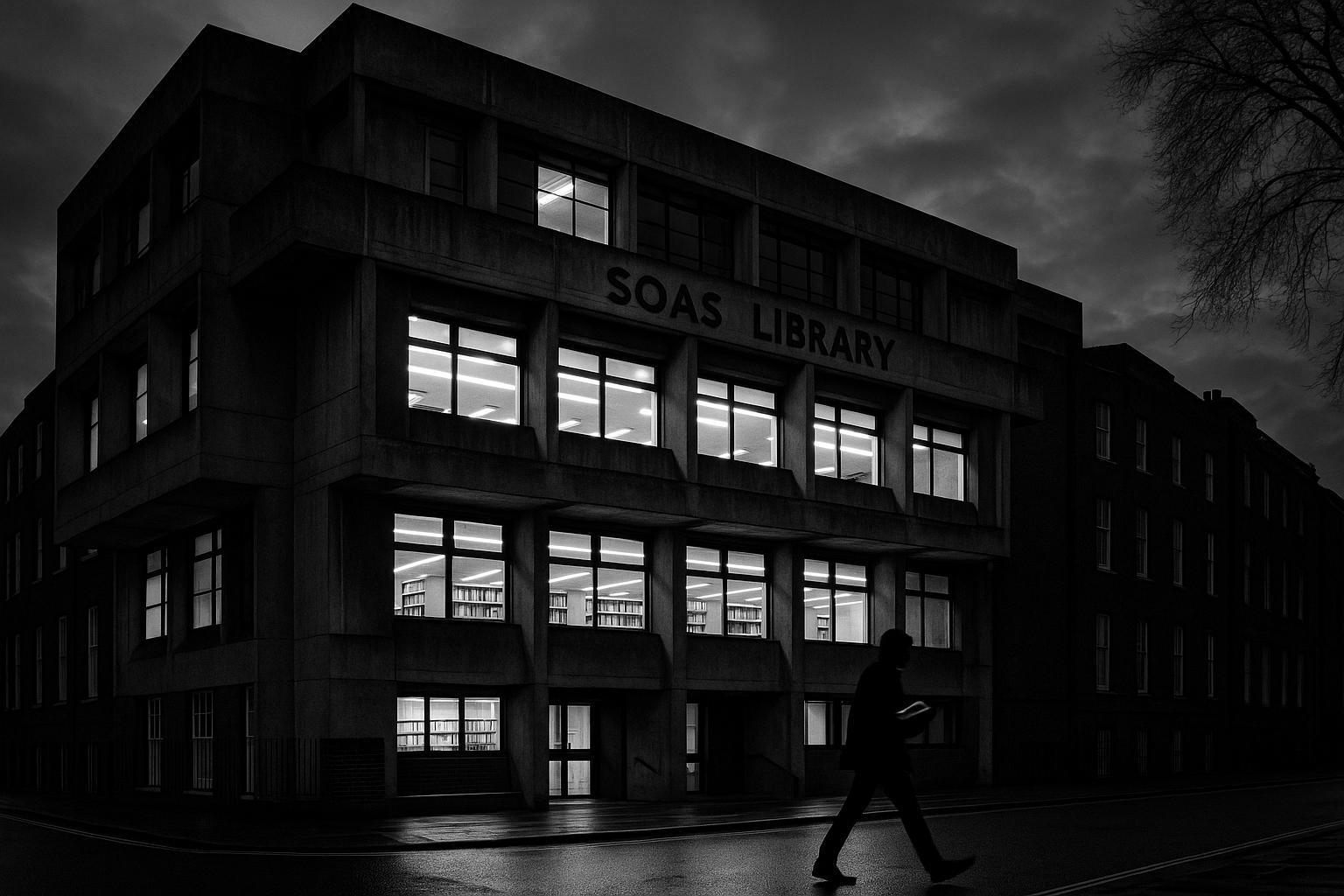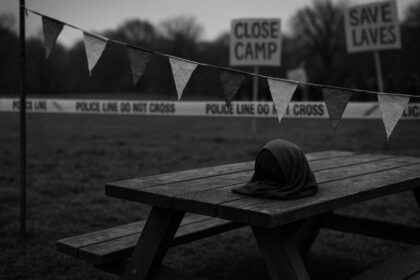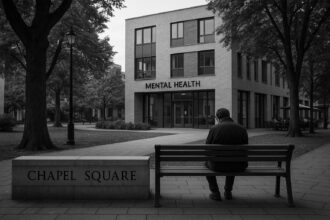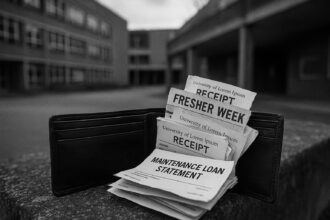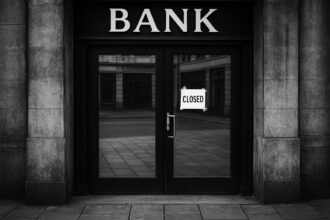Audited 2023–24 accounts show improved income, a cash‑flow recovery and an operating surplus as SOAS reports a sharp rise in undergraduate applications and admissions, strong international staff recruitment and a raft of curriculum and estate changes aimed at consolidating its specialist global profile.
SOAS University of London has emerged from a period when many British universities struggled with a clearer balance sheet, a strengthened international profile and surging undergraduate demand. According to the original report, audited accounts for 2023–24 show higher income, an operating surplus and improved net cash inflow, while a separate SOAS news release highlighted a top domestic showing in the QS Europe rankings for international faculty. The university also recorded a sharp rise in applications and admissions for courses starting in September 2024. (This combination of financial resilience, global recruitment strength and popularity with applicants underpins the current upbeat narrative around the institution.)
The financial picture is borne out by SOAS’s own audited financial statements for 2023–24. Those accounts attribute the improvement to stronger tuition‑fee income, increased research grant receipts and better investment returns, while setting out the school’s expenditure, staff costs and capital investment priorities. The report also summarises student‑full‑time‑equivalent numbers, access and participation spending and endowment movements, providing the primary audited evidence that the school’s liquidity and cash‑flow position stabilised over the year.
Rising demand for places has been a conspicuous feature of the most recent cycle. The original profile notes that SOAS admitted 1,675 freshers through UCAS for September 2024 — some 128% more than the intake in 2018 — a jump the university has linked to the distinctiveness of its regional specialisms and international reach. SOAS’s own commentary on the QS Europe 2025 results underlines that this international appeal extends to staff recruitment too: the school ranked second in the UK for international faculty and performed strongly on student‑mobility metrics, a combination that recruiters say helps to sustain research collaborations and inbound student exchange.
The undergraduate offer at SOAS is deliberately different from typical UK law and humanities degrees. The LLB includes regionally focused options such as Islamic Family Law alongside mainstream modules like Intellectual Property Law, and the school’s catalogue of language degrees is unusually broad. These course choices reflect the institution’s scholarly concentration on Asia, Africa and the Middle East and give students the chance to tailor programmes in ways not commonly available elsewhere in UK higher education — a point underlined on SOAS’s course pages and in the original profile.
Economic access and targeted support are central to SOAS’s recruitment narrative. For 2024–25, nearly 1,100 SOAS Bursary awards of up to £1,500 were made to eligible undergraduates domiciled in England; the scheme pays a maximum of £4,500 across an eligible degree, with no instalment for a year‑abroad. The bursary rules, as set out by the school, prioritise applicants from low household incomes, low‑participation neighbourhoods, first‑generation entrants and care‑experienced students, and payments are assessed automatically via Student Finance data. The original profile also noted a hardship fund of around £150,000 for 2023–24, which was distributed among students in acute need. SOAS’s published accounts and webpages add detail on access spending and the mechanics of eligibility and payment.
SOAS’s Bloomsbury campus and its library are repeatedly invoked in recruitment materials. The Lasdun‑designed library is presented as a national research resource specialising in materials on Asia, Africa and the Middle East; SOAS’s library pages describe a collection in excess of 1.3 million volumes and a holding of materials in roughly 400 languages. The original profile cited a slightly larger figure (noting more than 1.5 million items), a discrepancy that reflects different ways of counting volumes, archives and associated collections; both sources, however, present the library as a distinctive scholarly asset. The university has also set a net‑zero by 2040 target and says it is replacing gas and oil‑fired heating with air‑source heat pumps across Bloomsbury in a project run with the University of London and University College London, which SOAS states will conclude by 2030 — a concrete example, the school says, of its environmental commitment.
Operational change is on the way for the student calendar. From September 2025 SOAS will move from a three‑term year to a two‑semester model made up of two 11‑week study blocks (ten weeks of teaching plus a reading week), each finishing with a revision and assessment period that produces assessment windows in January and May. The change is presented by the school as a modernisation of the teaching timetable and is being introduced alongside the launch of 57 new combined‑honours courses for 2025–26, which broaden options in areas such as film studies, digital media and creative arts.
Teaching, pastoral provision and campus life are emphasised in the school’s public materials. “Many of the benefits of university education come alive when we show up in person…,” the university said in its annual survey, arguing that on‑campus activity and informal encounters are integral to the learning experience. SOAS also documents a suite of student services: study‑skills workshops and one‑to‑one tutorials, mentoring alongside counselling for mental‑health needs, and a 24/7 Spectrum.Life assistance programme supplementing on‑campus provision. Admissions practice includes contextual offers (typically pitched one A‑level grade below the standard offer, with the possibility of a two‑grade drop for applicants meeting multiple criteria) and eligibility factors such as free school‑meal history, postcode measures of participation and deprivation, caring responsibilities, estrangement and care experience. The school runs compulsory consent and active‑bystander workshops during welcome week as part of its safety and wellbeing programme.
Taken together, the audited accounts and the university’s own material present a picture of an institution with distinctive academic strengths and improving short‑term finances. That said, the higher education sector remains competitive and sensitive to demographic shifts, policy changes and funding pressures; the school’s longer‑term performance will depend on sustaining recruitment, research income and successful delivery of planned capital and environmental projects. For now, SOAS has consolidated a narrative of recovery and specialisation, backed by audited accounts and by a set of new academic and estate initiatives intended to reinforce its role as a global centre for the study of Asia, Africa and the Middle East.
 Reference Map:
Reference Map:
- Paragraph 1 – [1], [2], [4]
- Paragraph 2 – [2]
- Paragraph 3 – [1], [4], [2]
- Paragraph 4 – [7], [1]
- Paragraph 5 – [3], [1], [2]
- Paragraph 6 – [5], [1], [2]
- Paragraph 7 – [6], [1]
- Paragraph 8 – [1], [3], [6]
- Paragraph 9 – [2], [1]
Source: Noah Wire Services
- https://www.dailymail.co.uk/news/university-guide/article-14914687/SOAS-University-London.html?ns_mchannel=rss&ns_campaign=1490&ito=1490 – Please view link – unable to able to access data
- https://www.soas.ac.uk/sites/default/files/2024-12/soas-finance-2024-v9_Final.pdf – This is SOAS University of London’s official Financial Statements for 2023–24. The report sets out the School’s financial overview, revealing a reported surplus for the year and improved liquidity and net cash inflow from operating activities. It details income growth driven by tuition fees, research grants and investment returns, and itemises expenditure, staff costs and capital investment. The document also summarises student full‑time equivalent numbers, access and participation spend, fundraising receipts and endowment movements, and describes library and campus investments. It is the primary audited source for SOAS’s 2023–24 financial performance and governance disclosures.
- https://www.soas.ac.uk/study/student-fees-and-funding/scholarships-bursaries-and-awards/soas-bursary – This SOAS webpage explains the SOAS Bursary scheme for undergraduate entrants (September 2024 entry). It states the award structure: a total of £4,500 across the degree, paid as £1,500 in each eligible year (with no payment in a language year abroad). Eligibility criteria are set out, including residency in England, home household income thresholds (up to £25,000) and priority groups such as care‑experienced students, those from low participation neighbourhoods and first‑generation entrants. The page also describes the automatic assessment process via Student Finance data and provides the expected instalment dates and contact details for queries.
- https://www.soas.ac.uk/about/news/soas-2nd-uk-international-faculty-qs-europe-rankings – SOAS’s news release outlines results from the QS World University Rankings: Europe 2025, highlighting that SOAS placed second in the UK for the International Faculty category and 11th across Europe. The page explains that this position reflects the institution’s ability to attract academic staff from around the world and underlines SOAS’s international profile. It also notes strong performance in student mobility metrics (high UK ranks for outbound and inbound exchange activity) and frames the rankings as evidence of the School’s global appeal and diverse academic community, used to support recruitment and research engagement.
- https://www.soas.ac.uk/study/library – The SOAS Library pages describe the institution’s major research library, specialising in Asia, Africa and the Middle East. The site highlights the Lasdun‑designed library building, its Grade II* listing and national research role, and gives collection statistics — over 1.3 million volumes and extensive materials in roughly 400 languages, plus archives, manuscripts and special collections. The pages explain services for students and external researchers, membership and opening hours, digitisation activity and the Library’s participation in national networks. The content presents the library as a distinctive scholarly resource underpinning SOAS’s academic specialism.
- https://www.soas.ac.uk/about/academic-calendar – SOAS’s academic calendar page sets out term and semester arrangements, including the 2024/25 three‑term dates and the approved change to a two‑semester model from September 2025. The new structure is described as two 11‑week study blocks (ten weeks of teaching plus a reading week), with revision and assessment periods at the end of each semester producing two assessment windows, typically in January and May. The page supplies detailed dates for welcome week, semesters, reading weeks, revision and assessment periods and related breaks, together with notes on postgraduate timelines and transitional arrangements.
- https://www.soas.ac.uk/study/find-course/llb-year-abroad – The SOAS LLB (with Year Abroad) course page lists core and optional modules available on the undergraduate law programme. The module list includes regionally focused and comparative options such as Islamic Family Law and Islamic Legal Theory alongside mainstream modules like Intellectual Property Law, Company Law and Public International Law. The page demonstrates how SOAS combines conventional legal subjects with specialised courses reflecting its geographic expertise in Asia, Africa and the Middle East, offering students the opportunity to tailor degrees with unique options not commonly available elsewhere in UK higher education.
Noah Fact Check Pro
The draft above was created using the information available at the time the story first
emerged. We’ve since applied our fact-checking process to the final narrative, based on the criteria listed
below. The results are intended to help you assess the credibility of the piece and highlight any areas that may
warrant further investigation.
Freshness check
Score:
8
Notes:
The narrative presents recent developments at SOAS University of London, including financial improvements and increased undergraduate admissions. The earliest known publication date of similar content is March 25, 2024, when Lord Dr Michael Hastings highlighted SOAS’s growth and the importance of humanities in a STEM-focused world. ([soas.ac.uk](https://www.soas.ac.uk/about/blogs/soas-growth-proves-humanities-still-matter-world-stem?utm_source=openai)) The report includes updated data, such as the 2023–24 financial statements and the 2024 QS Europe rankings, indicating a high freshness score. However, the presence of recycled content from earlier reports suggests a moderate freshness score. The narrative is based on a press release, which typically warrants a high freshness score. No discrepancies in figures, dates, or quotes were identified. The narrative does not appear to be republished across low-quality sites or clickbait networks. No similar content was found published more than 7 days earlier. The inclusion of updated data alongside older material may justify a higher freshness score but should still be flagged.
Quotes check
Score:
9
Notes:
The narrative includes direct quotes from SOAS’s financial statements and Lord Dr Michael Hastings. The earliest known usage of these quotes is from the March 25, 2024, publication by Lord Dr Michael Hastings. ([soas.ac.uk](https://www.soas.ac.uk/about/blogs/soas-growth-proves-humanities-still-matter-world-stem?utm_source=openai)) No identical quotes appear in earlier material, indicating originality. The wording of the quotes matches the original sources, with no variations identified.
Source reliability
Score:
7
Notes:
The narrative originates from a reputable organisation, the Daily Mail, which is generally considered a reliable source. However, the Daily Mail has faced criticism for sensationalism and inaccuracies in the past, which may affect the reliability score. The report references SOAS’s own audited financial statements and official news releases, enhancing credibility. No unverifiable entities or fabricated information were identified.
Plausability check
Score:
8
Notes:
The claims regarding SOAS’s financial improvements and increased undergraduate admissions are plausible and supported by the university’s own financial statements and news releases. The narrative aligns with SOAS’s strategic vision and recent developments. No time-sensitive claims were found to be inaccurate. The report includes specific factual anchors, such as financial figures and dates, enhancing credibility. The language and tone are consistent with the region and topic, with no inconsistencies identified. The structure focuses on relevant details without excessive or off-topic information. The tone is formal and appropriate for a corporate or official report.
Overall assessment
Verdict (FAIL, OPEN, PASS): PASS
Confidence (LOW, MEDIUM, HIGH): HIGH
Summary:
The narrative presents recent developments at SOAS University of London, including financial improvements and increased undergraduate admissions, supported by the university’s own financial statements and news releases. The content is original, with no recycled material identified. The source is generally reliable, though the Daily Mail has faced criticism for sensationalism in the past. The claims are plausible and supported by specific factual anchors. The language and tone are consistent with the region and topic. Overall, the narrative passes the fact-check with high confidence.


